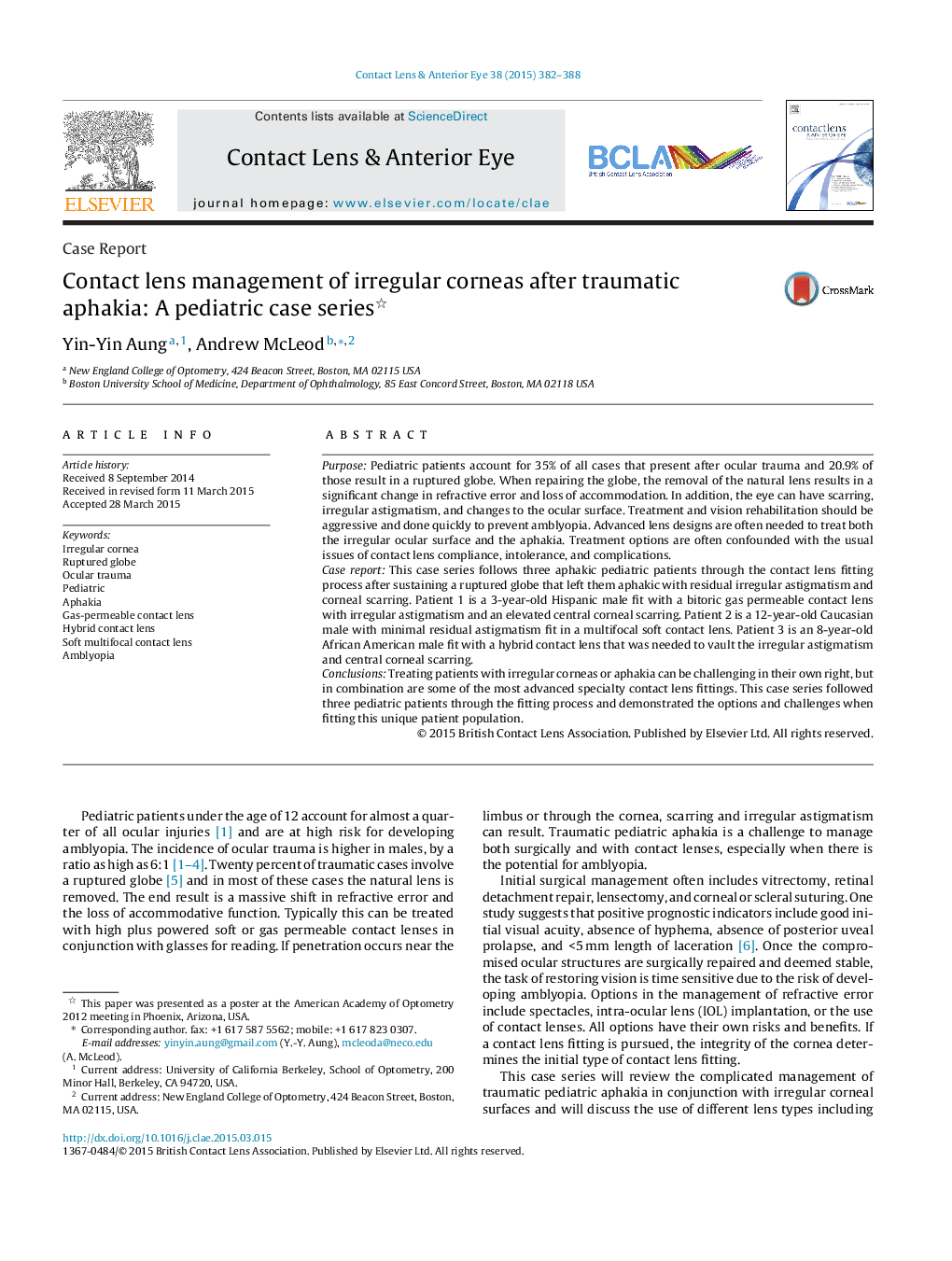| Article ID | Journal | Published Year | Pages | File Type |
|---|---|---|---|---|
| 2697293 | Contact Lens and Anterior Eye | 2015 | 7 Pages |
•Cases involve pediatric patients with trauma, aphakia, and irregular corneas.•Differential decision-making process and alternative options are discussed.•Highlights additional compliance issues and amblyopia prevention.•Utilizes bitoric gas permeable, soft multifocal, and hybrid contact lenses.•Demonstrates advanced specialty fitting with multiple interconnected issues.
PurposePediatric patients account for 35% of all cases that present after ocular trauma and 20.9% of those result in a ruptured globe. When repairing the globe, the removal of the natural lens results in a significant change in refractive error and loss of accommodation. In addition, the eye can have scarring, irregular astigmatism, and changes to the ocular surface. Treatment and vision rehabilitation should be aggressive and done quickly to prevent amblyopia. Advanced lens designs are often needed to treat both the irregular ocular surface and the aphakia. Treatment options are often confounded with the usual issues of contact lens compliance, intolerance, and complications.Case reportThis case series follows three aphakic pediatric patients through the contact lens fitting process after sustaining a ruptured globe that left them aphakic with residual irregular astigmatism and corneal scarring. Patient 1 is a 3-year-old Hispanic male fit with a bitoric gas permeable contact lens with irregular astigmatism and an elevated central corneal scarring. Patient 2 is a 12-year-old Caucasian male with minimal residual astigmatism fit in a multifocal soft contact lens. Patient 3 is an 8-year-old African American male fit with a hybrid contact lens that was needed to vault the irregular astigmatism and central corneal scarring.ConclusionsTreating patients with irregular corneas or aphakia can be challenging in their own right, but in combination are some of the most advanced specialty contact lens fittings. This case series followed three pediatric patients through the fitting process and demonstrated the options and challenges when fitting this unique patient population.
